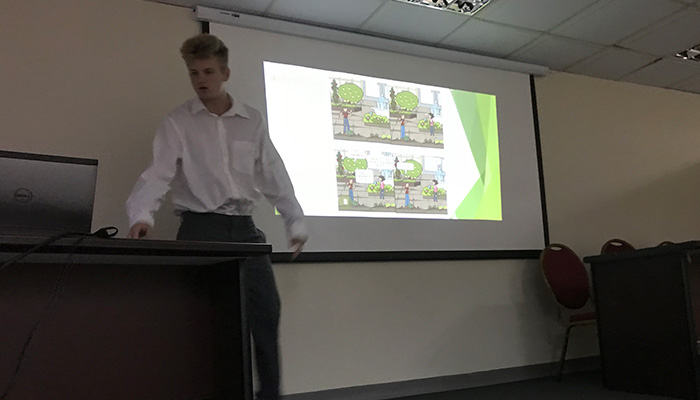As a protected area, the preservation of natural resources within the site is one of our priorities, which is why it was necessary to develop a series of conservation and management activities. In the Park Management Plan of 1986, the Natural Resources Management and Conservation Subprogram and the Curundú River Rehabilitation Subprogram began, within the Environmental Management Program, this name was maintained and over time it underwent modifications; in 1999 it was reformed into the Management and Investigation Unit, in 2006 it was modified as an Environmental Management Area where the monitoring of natural resources and a Wild Fauna Rescue and Rehabilitation Area is carried out; until 2007 the rescue of fauna was managed by the Park Rangers.
National and international internships and professional practice (University and College)
Internships with high school and university students must complete a range of hours established by the college or university putting into practice their knowledge learned in the classroom. Students will use their knowledge and apply it during the period of their practice. Unlike the internships, we work with graduating students from national and foreign universities who develop assigned proposals for their preparation, leaving a valuable legacy based on their experiences and knowledge, who are accompanied by responsible professionals in charge of monitoring these studies and who, in in the near future they may be implemented in the protected area.
Social service and community environmental volunteering for the conservation of green spaces and natural resources
The program has worked during these years with high school and university students; This activity is a requirement requested by the academic entity to complete their studies, in this activity they must complete hours to be certified by the PNM. Students must have a great sense of responsibility and a good attitude towards the assigned tasks, in addition, these tasks can benefit and awaken abilities in the participants. Remembering that carrying out this type of service does not receive any type of remuneration since it seeks to encourage young people to social commitment.
Environmental volunteering (CSR)
The activity is usually programmed with companies, schools, individuals among others; This is a free job without remuneration that the person performs through various activities in the Park; It has always had the active participation of society, offering its support in multiple tasks during the year and contributing its knowledge, skills in different activities, taking learning and awareness of environmental issues to the protected area. It can support various tasks such as: group management (guide), maintenance of rest areas, nursery, cleaning of the limits of the PNM, office work (data update), maintenance of green areas, cleaning of paths and information panels. among others.
Reforestation
This activity is implemented where tree cover has been reduced by weather conditions. The regeneration of the tree cover leads to the improvement of the structure, protection and fertility of the soils, creates the habitat of many animals, and provides benefits to visitors and surrounding areas.
In 1992, the Reforestation Program began in critical areas, in this program, those invaded by canal straw (Saccharum spontaneum) were considered as “critical areas” and later the areas impacted by the construction of the North Corridor; Since then, seven parcels have been reestablished along the Camino del Mono Tití and others in different areas of the Park.
Nursery the Heliconias
The Metropolitan Natural Park has its own nursery with native species of humid and dry tropical forest present in the park, the nursery is used to germinate seedlings of tree species native to the site and monitoring their growth. These seedlings will be used to reforest the area that needs to be restored.
In the nursery there are species such as: Swietenia macrophylla (mahogany) and Tabebuia rosea (oak) and fruit trees such as Chrysophyllum cainito (star star), Cymbopogon citratus (Lemongrass), Mellissa officinalis (lemon balm), Chrysobalanus icaco (icaco), Manilkara bidentata (níspero) and others, the species can vary according to the dry or rainy season, since it depends on the collection of seeds or seedlings.








